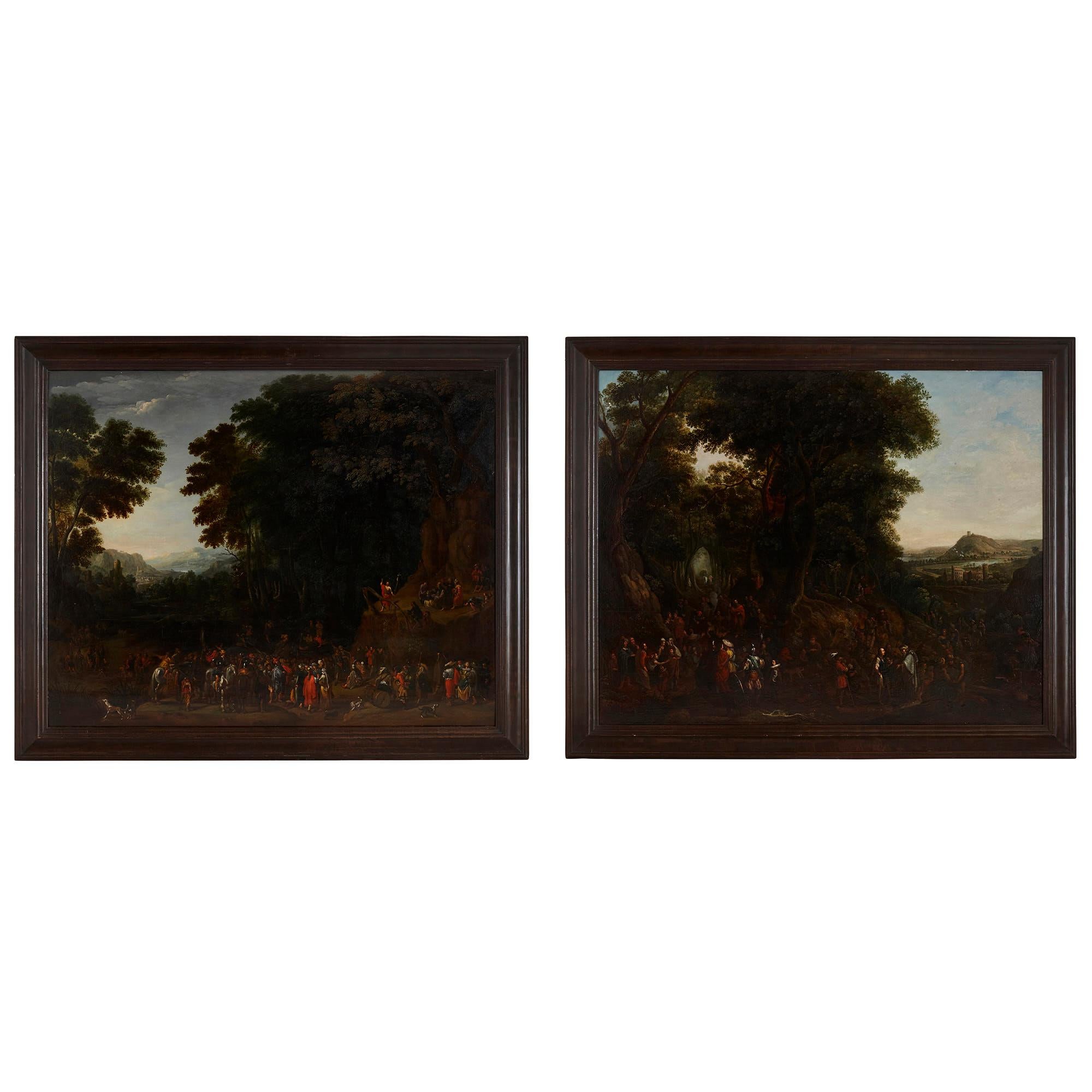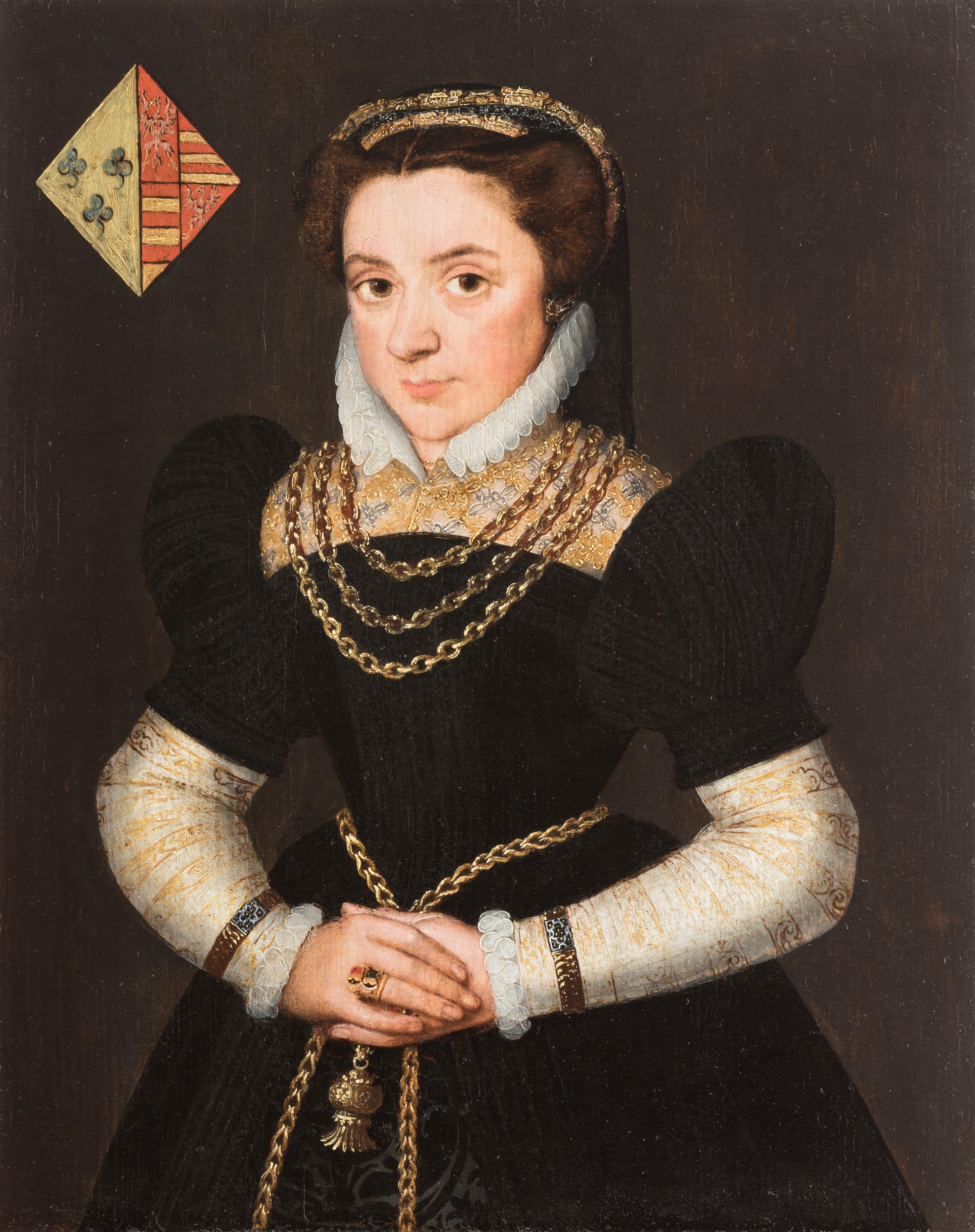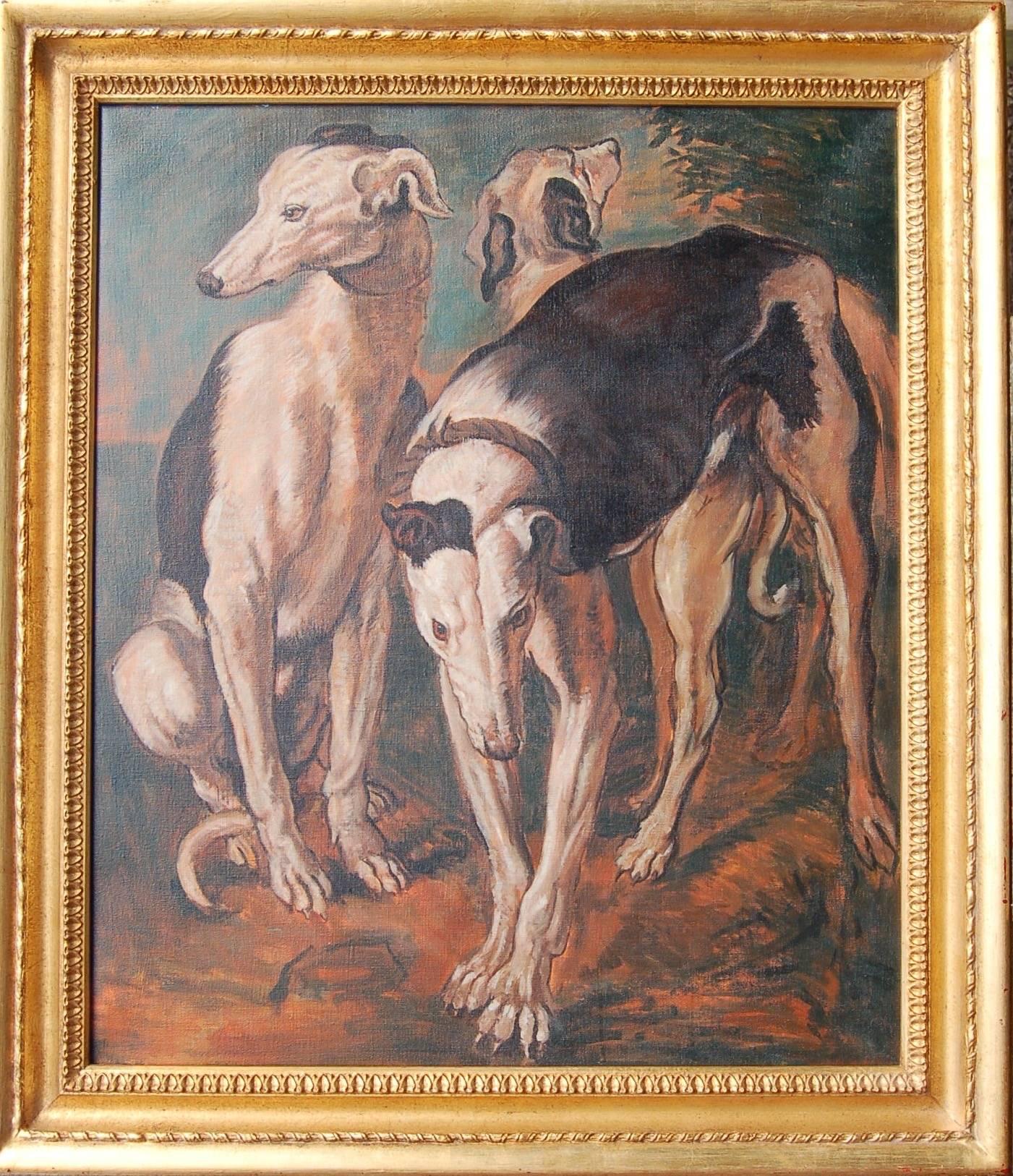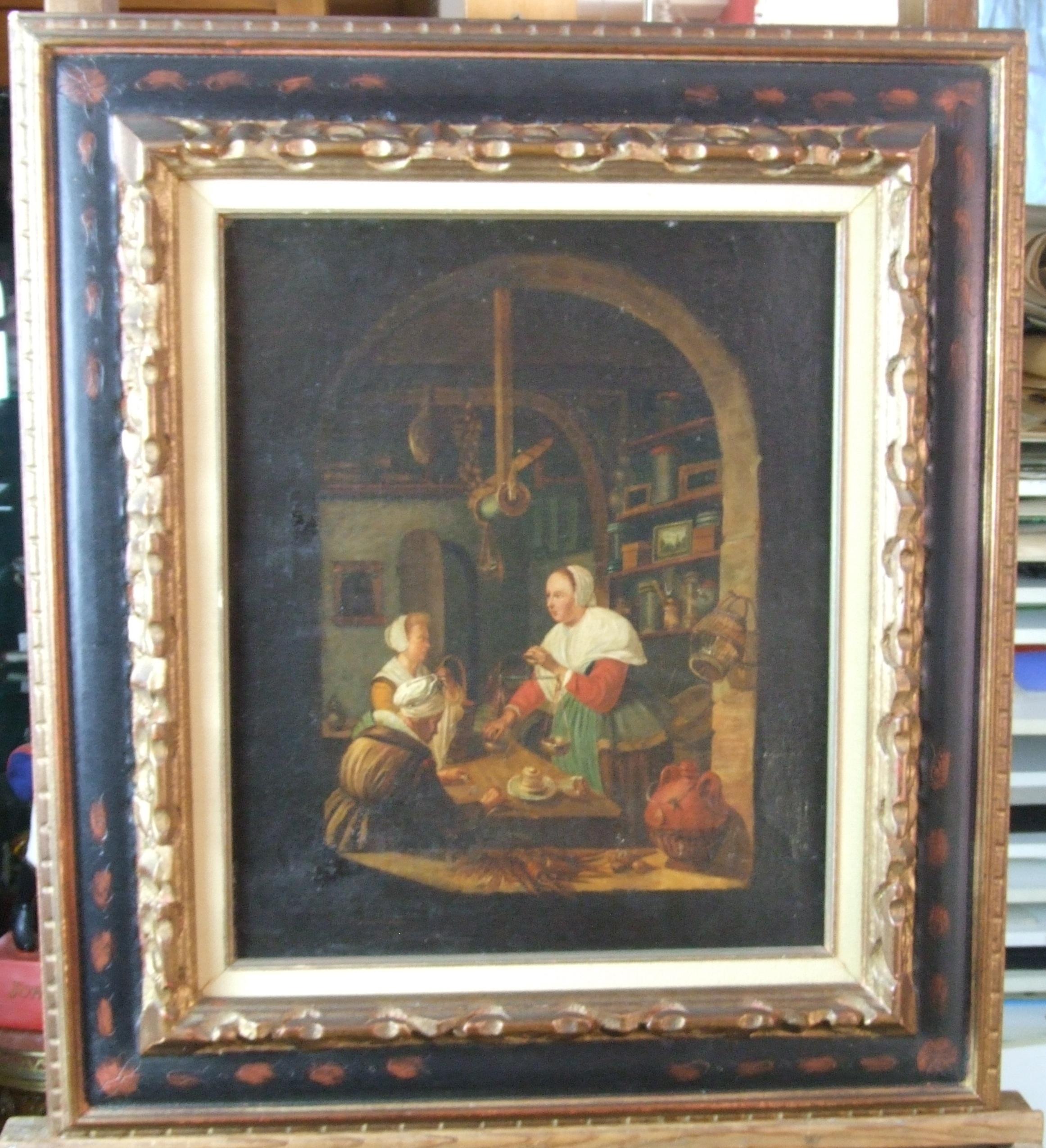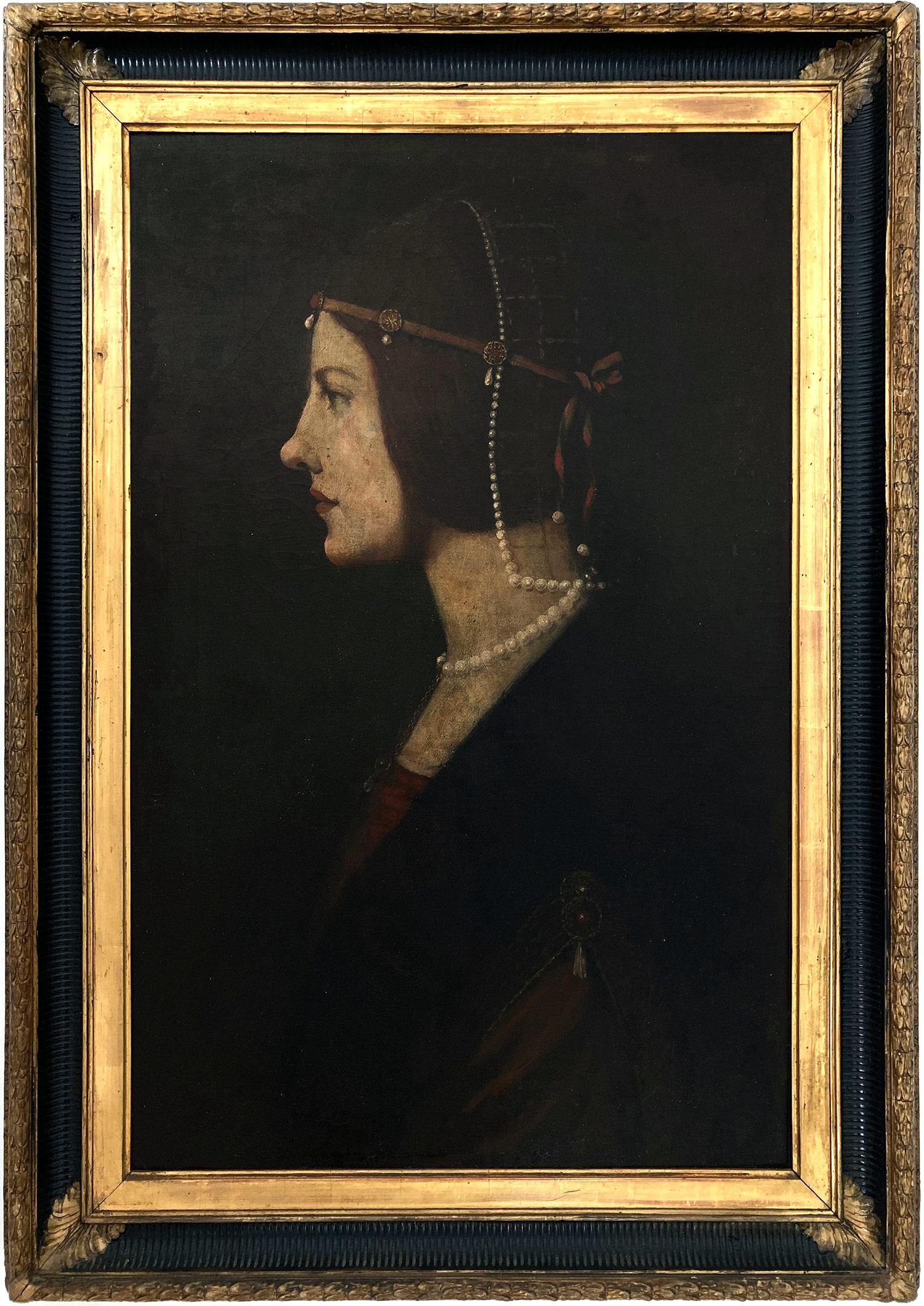Items Similar to 16th c. Flemish school, Renaissance, c. 1580, Venus and Mars surprised by Vulcan
Want more images or videos?
Request additional images or videos from the seller
1 of 10
16th c. Flemish school, Renaissance, c. 1580, Venus and Mars surprised by Vulcancirca 1580
circa 1580
About the Item
Venus and Mars surprised by Vulcan, circa 1580, circle of Jacob de Backer ( Antwerp, 1545 - 1585)
The subject of our work is derived from Ovid's metamorphoses, where the author tells the story of the loves of the Gods of Olympus. Several interpretations of this story have became very succesful during the Renaissance and were illustrated by famous Italian and Nordic painters such as Tintoret, Wtewael, De Clerk and Goltzius, Paris Bordone.
Our artist features the scene in the intimacy and darkness of a bedroom, lit by candlelight, bringing a dramatic dimension to the event.
As in a theater, once the curtain is lifted up, the scene is happening in front of the viewer. Venus and Mars on the bed are surprised by the unexpected arrival of the husband of Venus, Vulcan who bringing a candle catches his wife with his lover. While she tries to hide her nakedness under the sheets, Mars, faithful to his warrior status is ready to pull out his sword and punish the intruder.
At the foot of the bed decorated with sphinge is placed the beautiful dress in red velvet corset of the goddess, and we also see the helmet and breastplate of Mars on the bed. The jewels and a mirror are carefully placed on the armchair.
Vulcan appears to us as a young man, dressed in haste, as evidenced by an empty shirt sleeve, barefoot. The goddess looks nonchalant and exposes her nakedness, raises her right hand by wanting to calm his lover and prevent the blood to flow. In the background, the two servants are talking in front of the door, the witnesses of a household scene and perhaps those who have alerted the unfortunate husband.
The artist chooses to depict this scene in the darkness of a room lit only by candlelight to amaze us with its clever play of shadows and lights, its dazzling touches, illuminating parts of the scene and bringing depth to the composition.
Our work is distinguished by its palette of rich and intense colors, the ingenious use of the chiaroscuro, the modeling of naked bodies with pronounced muscles, delicately sculpted with the help of shades of gray on the body of young women, and beige brown shades on the body of Mars.
The artist adds small details of daily life to transfer the painting from the era of the gods of Olympus to its contemporary world as evidenced by the chamber pot at the foot of the bed.
Testimony of a pronounced taste for mythological scenes, imprinted with Nordic mannerism associated with the light obscure caravagesque influence our painting was originally intended for a discerning and refined collector ain order to embelish his interior or even his private art cabinet.
16th century Antwerp School, circle of Jacob de Backer.
Oil on oak panel, Dimensions: h. 19.2 in, w. 25.2 in.
Carved and giltwood frame of later period: h. 25.2 in, w. 30.3 in
Jacob De Backer Antwerp, 1545 - 1585 Painter of mythological and religious subjects, much appreciated in his time, renowned Italianist, in the manner of Floris, he trained in Florence and Rome, where he stayed between 1557 and 1560, and would have been the student of Antonio Palermo, then Hendrick Van Steenwijk. According to Van Mander, he died at the age of thirty, but no mention is made of his dates of birth and death. His works have disappeared for the most part. We know that he painted, for the church of Our Lady of Antwerp, the Triptych of the Last Judgment, still placed above the tomb of the printer Christophe Plantin, who died in 1589. Among his paintings, we can mention: Jesus blessing the children at the Museum of Antwerp, Venus, Bacchus and Love at the Museum of Perpignan, a beautiful suite of the Deadly Sins at Naples, Capodimonte, Venus and Love in Berlin.
- Creation Year:circa 1580
- Dimensions:Height: 25.2 in (64.01 cm)Width: 30.3 in (76.97 cm)
- Medium:
- Movement & Style:
- Circle Of:Jacob de Backer (1555 - 1585)
- Period:
- Condition:Professionnaly restored, ready to be hanged on the wall.
- Gallery Location:PARIS, FR
- Reference Number:1stDibs: LU2433211889722
About the Seller
No Reviews Yet
Vetted Seller
These experienced sellers undergo a comprehensive evaluation by our team of in-house experts.
1stDibs seller since 2023
- ShippingRetrieving quote...Ships From: PARIS, France
- Return PolicyA return for this item may be initiated within 3 days of delivery.
More From This SellerView All
- 17th c. Flemish, Still life with birds and raisins, workshop of Frans SnydersLocated in PARIS, FRSTILL LIFE WITH BIRDS AND RAISINS, WORKSHOP OF FRANS SNYDERS (1579-1657) An exquisite and attractive work, our painting with its rich and harmonious composition is one of the remarkable examples of the passion of art lovers of the 17th century for still lifes, the genre in full ferment in Antwerp in early 17th century, long before its arrival to Paris in the 1630s & 40s. Our painting presents on an entablature covered with wine-colored velvet cloth, various objects in an artistic arrangement which is intended to be spontaneous. The tight framing, like an extract and the piled up objects suggest a plenitude and an infinite richness of what nature can offer and reinforce the feeling of prosperity. The wicker basket overflowing with translucent bunches of grapes in green and purplish hues with icy reflections dominates the right side of the painting. In the center is the game birds, partridge, snipe, sparrow, pincon and others, each bird with a fine and precise design, transparent plumage, the meticulous rendering of the different beak or leg parts, zebrures and streaks of the down. On the left, two stacked white and blue Chinese...Category
Mid-17th Century Old Masters Still-life Paintings
MaterialsWood Panel, Oil
- 17th c. Flemish school - Allegory of the five senses - attributed to P. LisaertBy Pieter Lisaert IVLocated in PARIS, FR17th c. Flemish school - Allegory of the five senses - attributed to Pieter Lisaert (Antwerp, 1595-1629) Our attractive painting on wood immediately catches the eye with its bright a...Category
Early 17th Century Old Masters Interior Paintings
MaterialsOil, Wood Panel
- Adam and Eve in paradise, studio of Jan Brueghel the Younger, 17th centuryLocated in PARIS, FRStudio of Jan Brueghel the Younger 17th century Antwerp school Oil on oak panel, h. 37 cm, w. 49 cm Tortoiseshell veneered baroque style frame...Category
Mid-17th Century Old Masters Figurative Paintings
MaterialsOil, Wood Panel
- The crossing of the Red Sea, 17th century Antwerp, studio Frans FranckenBy Frans Francken IILocated in PARIS, FRCrossing of the Red Sea Workshop of Frans Francken II (1581-1642) 17th century Antwerp School Oil on oak panel Dimensions: h. 49.5 cm, w. 64.5 cm (19.49 in x 25.39 in) Moulded and blackened wooden frame with wide mouldings, with inverted profile from the later period. Framed dimensions: h. 82 cm, w. 97 cm (32.28 x 38.19 in) Our panel illustrates one of the episodes of the Old Testament, recounted in the book of Exodus. After crossing the Red Sea...Category
17th Century Old Masters Figurative Paintings
MaterialsOil, Wood Panel
- Cercle of Ambrosius Francken, Adoration of the shepherds, 17th century AntwerpLocated in PARIS, FRAdoration of the shepherds, Cercle of Ambrosius Francken, Early 17th century Antwerp school Oil on oak panel: h. 55 cm, w. 43 cm (21.65 in x 16.93 in) 17th c. ebonized and moulded f...Category
Early 17th Century Old Masters Figurative Paintings
MaterialsOil, Wood Panel
- Ascension Day in Venice, Louis de Caullery (1582-1621), Flemish 17th centuryLocated in PARIS, FRAscension Day in Venice 17th century Antwerp School Attributed to Louis de Caullery (1582-1621) Oil on oak panel Dimensions: h. 19.68 in, w. 34.25 in Flemish style frame in ebonized ...Category
Early 17th Century Old Masters Landscape Paintings
MaterialsOil, Wood Panel
You May Also Like
- Two oil on panel Old Master landscape paintings by Johannes Jakob HartmannLocated in London, GBTwo oil on panel Old Master landscape paintings by Johannes Jakob Hartmann (Bohemian, 1680-1730) Bohemia, early 18th Century Panel: Height 73cm, width 93cm Frame: Height 90cm, width...Category
Early 18th Century Northern Renaissance Landscape Paintings
MaterialsOil, Wood Panel
- Le Mousquetaire.Musketeer.Cavalier.Spanish Tradition.Diego Velázquez Influence.By Ferdinand Victor Leon RoybetLocated in Sutton Poyntz, DorsetFerdinand Victor Leon Roybet. French ( b.1840 – d.1920 ). Le Mousquetaire. Oil on Panel. Signed upper right. Image size 31.1 inches x 24.4 inches ( 79cm x 62cm ). Frame size 39 inche...Category
Late 19th Century Northern Renaissance Figurative Paintings
MaterialsOil, Wood Panel
- Fine Old Master Portrait, by Gillis Claeissens, Portrait of a Lady, 1580, BrugesBy Gillis ClaeissensLocated in Greven, DEGillis Claeissens Portrait of a Lady, probably "Anne Joigny-de Pamele" Oil on wood, 35,5 x 28 cm Gillis Claeissens has only recently been rediscovered as an important portrait painter of the 16th century. He received his training in the studio of his father, Pieter I Claeissens. Gillis became a freemaster of the St Luke's Guild in Brussels in 1566 and worked at the court of Alexander Farnese in Brussels between 1589 and 1592. Later he was also court painter to the Archdukes Albert and Isabella. After his return to Bruges, he created portraits of high Bruges society. It was only through the Forgotten Masters exhibition in Bruges in 2018 that the work of Gillis Claeissens was rediscovered. The present painting recently turned up in a private collection and was confirmed as a typical work by Claeissens by Mrs Oosterwijk at the Museum Groeninghe in Bruges. Gillis Claeissens or Egidius Claeissens (Bruges, 1526 – Bruges, 17 December 1605) was a Flemish painter of portraits and altarpieces and a member of a prominent family of artists originating in Bruges. It has only been possible to distinguish Gillis Claeissens' work from that of his father and siblings after scholars discovered a contract with the artist for the painting of a tryptich. It was further discovered in 2015 that he artist can be identified with the Monogrammist G.E.C. These discoveries have allowed to recognise Gillis Claeissens as an important portraitist alongside Pieter Pourbus in 16th century Bruges. Portrait Paintung, Old Master, Bruges School, Bruges Painting...Category
16th Century Northern Renaissance Portrait Paintings
MaterialsOil, Panel
- Three Greyhounds, Contemporary Copy of work by J Snyders 1650By Jonathan AdamsLocated in Brecon, PowysOriginal work by J Snyders 1650: A really eye-catching copy on canvas of this hunting scene originally by Snyders. Artist Biography: Jonathan Adams has...Category
2010s Northern Renaissance Animal Paintings
MaterialsCanvas, Oil
- Flemish interior, XIX c. - Oil on canvas, 46x38 cm, framed.Located in Nice, FRWonderful scene depicting a flemish interior higly detailed. Oil on canvas. XIX century. comes with frameCategory
Early 19th Century Northern Renaissance Interior Paintings
MaterialsOil
- Copy of "Portrait of Beatrice dʼEste" by Leonardo da Vinci created 15th CenturyLocated in New York, NYA masterful copy by an unknown artist, after the portrait of "Beatrice d'Este" by Leonardo Da Vinci also known as ‘Portrait of a Lady’ or ‘La Dama con la reticella di perle (The Lady With a Pearl Hairnet)’. The original work originally created in the 15th Century is currently on display in the Pinacoteca Ambrosiana Museum of Milan. Beatrice d'Este was the Duchess of Bari/Milan and was believed to be one of the most attractive princesses of the Renaissance. Her impeccable style won her many admirers throughout Italy and France, and she became a trendsetter of the highest order. This copy of the original painting, is an oil on canvas done in the 18th Century, and in this exquisite portrait, the artist has masterfully depicted the fine details with draped hair, pearls, royal dress, ornate headgear and sumptuous jewelry in front of a dark background. Once again, capturing the imagination with another enigmatic smile. It comes housed in an elegant period giltwood frame with ebonized trims and ready to be displayed with hanging wire on verso. Art measures 28 x 18 inches Frame measures 34.5 x 24.5 inches There is much debate and controversy over who actually painted the "Beatrice d'Este" was it Leonardo da Vinci (1452–1519), or Giovanni Ambrogio de Predis (1455–1508). So we may never know who executed the original portrait which hangs in the museum, but that need not deter from an appreciation of its singularity. Following the portraiture convention established by painters of the Quattrocentro, the artist has chosen to portray his sitter in profile. In doing so, he magnificently captures the essence of his sitter, a girl on the threshold of womanhood. Bedecked in the adornments—silk, velvet, pearls and embroidery (brocade) crafted of spun gold threads—afforded her by birthright and marriage, Beatrice looks forward in noble serenity. And at the same time her profile with its upturned nose and slight smile betrays an innocence that must have been the basis of the oft-repeated epithet: la più zentil donna in Italia” (“the sweetest lady in Italy”). It is believed the lady is Beatrice d'Este (1475-1497), duchess of Bari and later of Milan, the wife of Ludovico Sforza (known as "il Moro"). One of the most beautiful princesses of the Italian Renaissance, she was known for her good taste in fashion. Beatrice was a member of the Este-Sforza family, which joined by marriage two of the oldest reigning and already powerful houses in Italy. The house of Este, which held court in Ferrara, traced its lineage to the 11th century Dukes of Saxony and Bavaria. Beatriceʼs father, Ercole I ruled the Ferrara commune for 34 years, catapulting the city-state (and the Estes with it) to an unmatched level of economic prosperity and cultural prominence. The family was renowned for its love of letters and patronage of the arts. The first time Leonardo da Vinci’s name resounded in the Ambrosiana, it was through the pen of its founder, Cardinal Federico Borromeo, who attributed this little panel to the great Master, describing it as “A portrait of a Duchess of Milan, by the hand of Leonardo”. Following the Cardinal’s statement, the portrait was for long assumed to depict Beatrice d’Este, the wife of Ludovico il Moro. However, scholars have recently been more cautious and vague in their statements, with regard to both the artist (anonymous Lombard or Emilian...Category
18th Century Northern Renaissance Portrait Paintings
MaterialsOil, Canvas
Recently Viewed
View AllMore Ways To Browse
C Dior
Renaissance Painting
Contemporary Renaissance
Berlin School
School Of Berlin
Italian Renaissance Art
Art Flemish
C Manning Artists Paintings
Oil Painting Renaissance
Renaissance Painting Frame
Northern School
Berlin School Painting
Italian Renaissance Painting
Clever Art
Flemish Paintings
Antique School Light
16th C
16th Century Hand Art
